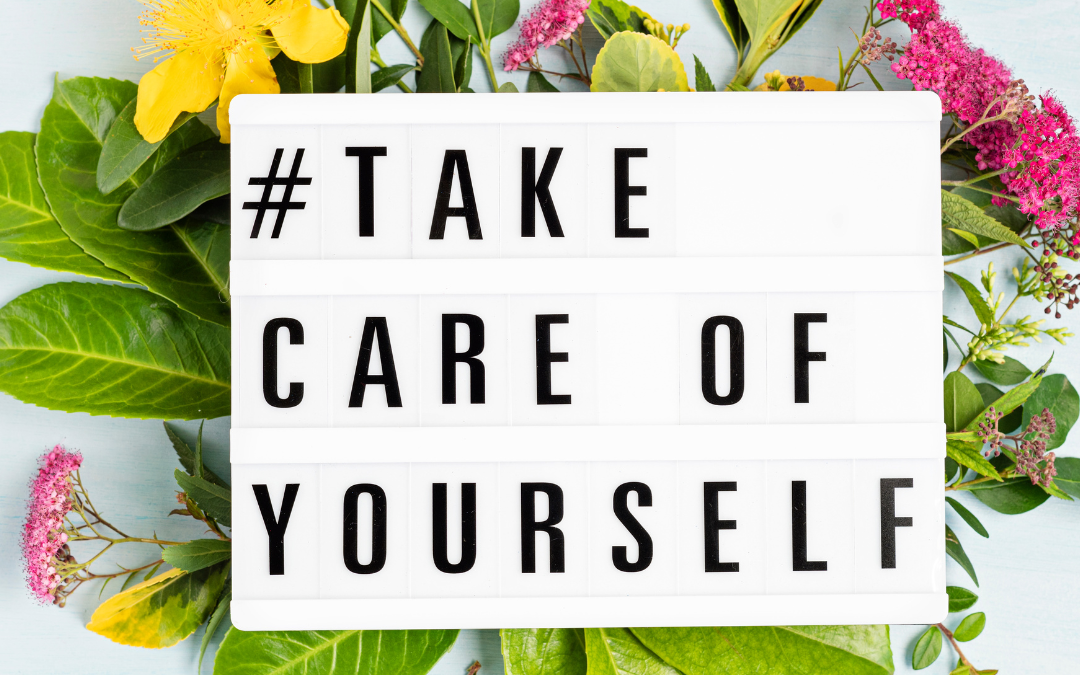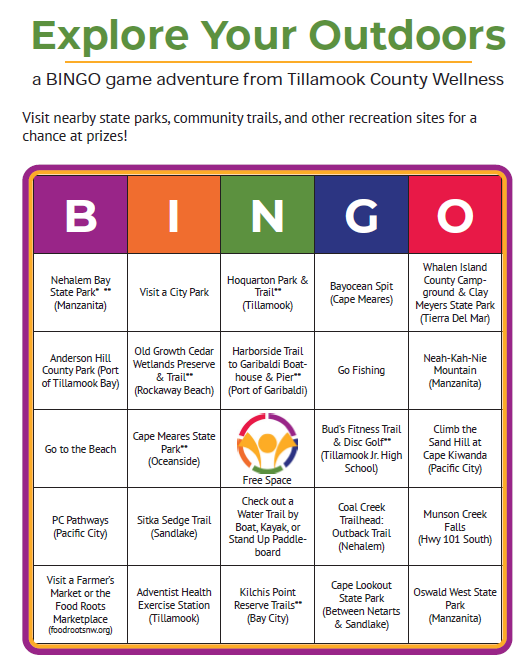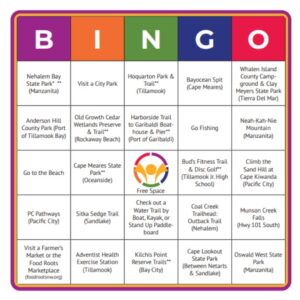
by Guest | May 24, 2023 | Being Well, Featured
May is Mental Health Awareness month yet as a mental health professional, I focus on mental health year-round. I also approach mental health as multidimensional, meaning that it goes beyond just mental wellbeing and includes all 8 dimensions of wellness. If one dimension suffers, then overall wellbeing suffers and that impacts mental health even further due to increased stress and decreased coping mechanisms.
So, what are the 8 dimensions of wellness? Physical, emotional, intellectual, social, spiritual, financial, occupational, and environmental. Mental health is often believed to be comprised of our emotional, psychological, and social wellbeing. Yet if we do not take care of the spiritual, physical, financial, occupational and environmental dimensions of ourselves, we end up out of harmony and balance. When we are out of balance, we are not able to access and utilize coping skills and we will continue to make choices that negatively impact our overall wellbeing.
If you Google tips for improving your mental health you will get a variety of lists. Many of them will have things from a few of the dimensions. I would like to share small steps you can take in each of the dimensions to help you begin to build multidimensional mental health.
Physical
We often hear all the things we can do within physical wellness to improve our mental health. Have good sleep hygiene, get daily movement, eat a healthy diet, stay hydrated, take your meds and supplements, and manage any physical health symptoms or diagnosis. Yet we often do not hear about the correlation between mental health and the development of physical ailments. Just like physical wellness can help improve our mental health, untreated mental health can lead to disease. Depression has been shown to increase the risk for things like diabetes, heart disease, and stroke.
Emotional
Emotional wellness is all about having coping skills to help manage and regulate our emotions. Mindfulness, meditation, journaling, therapy, EFT tapping, and any other tool or practice that helps you navigate your feelings and cope with life’s challenges are all emotional wellness. Emotional wellness also helps us build problem solving and resiliency skills. This bolsters our mental health and aids in coping with any future stress or difficult situations.
Social
Social wellness is about having connections and relationships with others that ease stress, anxiety, depression, improve self-esteem, and provide comfort and joy in companionship. Without strong social connections, we are prone to isolation and increased mental health struggles, including increased risk for suicide. Healthy relationships include setting boundaries, honest communication, and mutual respect and trust. Healthy social connections have been shown to lower anxiety and depression, help with emotional regulation, increase empathy, and even have a positive impact on physical health through improved immune systems.
Intellectual
Isn’t intellectual wellness just mental health? No. Intellectual wellness is about the thinking parts of our brains, our cognition. It also includes our emotional and social functioning. Mental health is more about thoughts, feelings, mood, and/or behaviors. Intellectual wellness practices that can also boost or improve mental health are pursuing crafts or other creative hobbies and endeavors, reading or pursuing learning, and anything that requires thinking or problem solving. Brain health improves mental health because we process our emotions in our brains.
Spiritual
Spiritual wellness helps us by giving us a connection to purpose and meaning in life. It could be belief in a higher power or anything that gives you connection and meaning to life outside yourself. Without a connection to something bigger than ourselves, we can struggle to find meaning in life and this can exacerbate any mental health issues. Whether it is organized religion or a connection with nature, spiritual wellness is vital to mental health and overall wellness.
Financial
Financial wellness includes the knowledge and skills of planning and managing expenses as well as your money mindset. Do you have a negative relationship with money or negative beliefs? Do you stress over finances? I wrote about developing a healthy relationship with money last month. One thing you can do is have a “money date” with yourself each week where you check in with your finances and get your energy and mindset in a good space around your financial situation. This will reduce stress and improve mental health through improved financial wellness.
Occupational
Occupational wellness relates to all aspects of how happy or satisfied you are in your job or career. Do you work a job you dread going to or do you like where you work and who you work with/for? Does your job or career offer benefits and an environment that encourages wellness and the ability to do self-care and take time for mental health? Are you working to survive or doing what you love? If you have a healthy work environment and work a job or career that you are passionate about and enjoy, then you will have improved mental health and overall wellness.
Environmental
Environmental wellness is related to how we impact our environment and how, in turn, it can impact human health. Things like recycling, reducing waste, water conservation, and using sustainable products all help care for our environment. In return, our environment can continue to help us sustain healthy living. It can also be that you have a comfortable, healthy, safe, and welcoming home environment. When our homes are not safe or comfortable, this can interrupt our mental health and overall wellness.
Each of the 8 dimensions can impact one another and impact our mental health. Overall wellness is a codependent web woven between the dimensions. Hence the importance of taking small steps to improve each area and maintain harmony between them in order to have optimal mental health. I hope you are all taking great care of yourselves and finding ways to be multidimensional in your wellness.
AUTHOR: Amanda Ferrat, Founder of Value Yourself Counseling LLC and Certified Advanced EFT Practitioner & Wellness Counselor
Other wellness questions? Email us at info@tillamookcountywellness.org. For more local health and wellness information, visit www.tillamookcountywellness.org or follow Tillamook County Wellness on Facebook and Instagram.

by Guest | May 3, 2023 | Featured, Work Well
There are 8 dimensions of wellness and the one that people don’t like to talk about is financial wellness. Talking about money can be uncomfortable yet we all have money stories and we all have a relationship with money due to living in a capitalist society. Not only do we have our personal relationship with money, that is formed by how we grow up and our early interactions with having or not having money, but money and finances also impact our relationships with others. Especially our personal, intimate relationships. I reached out to a couple professionals to ask them for their knowledge and expertise on money and relationships. Here is what they had to say.
Question: How can finances, or our relationship to finances, impact our individual health?
Lisa Brumm, CEO of My Financial Girlfriend: Money and the lack of knowledge of how to best utilize our money is one of the Top 3 life stressors. High levels of financial stress present through physical symptoms like loss of sleep, high anxiety, headaches/migraines, compromised immune systems, digestive and colon issues, high blood pressure, muscle tension, heart arrhythmia, depression and a feeling of being overwhelmed. Our relationship with money is sadly built on anxiety, helplessness, and worry, so the lack of knowledge becomes a vicious circle with trying to better our circumstances. “Go to school, get a degree, find a job and then retire when you’re 68” has been the framework for decades and unless you are born into generational wealth this is the sad status quo.
Molly Mandelberg, Founder of Wild Hearts Rise Up: How we do anything is how we do everything. If we are avoiding our money, or ignoring it, or feeling bad about it, it’s likely not the only thing we are being that way with. When we start to tend to our finances, give them our attention, and be intentional about them, that relationship begins to heal and our experience of money can change.
Q: How might our relationship to finances impact a relationship with a partner? What challenges may couples face with finances?
Lisa: People who face money issues or are dealing with debt may feel insignificant or even worthless because they have few assets to show for their work. Many people who are stressed turn to unhealthy habits. Communication with couples in these stressful times tend to turn to blaming each other for their poor choices. This failure to recognize and accept their own responsibility is the ultimate breakdown in the relationship. Aside from infidelity, Finances is the second top reason for divorce or break ups in relationships. Money can also cause stress because of the side effects and consequences that can come from poor financial decisions or specifically from lack of confidence. In relationships, money can be a very sensitive issue too. We are not taught in America about how to handle or manage money. We usually must go through extreme crises or be even nearly bankrupt before we reach out for help due to the shame and embarrassment.
Molly: Money can be an uncomfortable topic for people, it can be even more highly charged when it comes to partnership and sharing finances with another person. Whether that be a romantic partnership or a collaboration with a peer in your profession. It’s helpful to name the discomfort, to open the communication to create clear and healthy boundaries so that it’s safe to discuss what needs to be brought up, and the ideally mutually beneficial practices can be created. The truth is valuable, and being willing to share what’s really going on can free you up for even deeper connection while co-creating a container for more money and magic to flow through.
Q: How do you start to have conversations with yourself about money and finances? What might be helpful to keep in mind when starting to have conversations with a partner about money?
Lisa: Realize that if your rent, lights, and cell phone are paid that you are probably doing better than you think. It is where we think about having hundreds of thousands of dollars because we are constantly comparing our situation to others. You overhear someone talking about a great vacation that they just had or trading in their car for something newer that we begin to think we are worthless. We must stop comparing our financial life to others. In a relationship, this becomes an even stronger bond to be supportive and talk about your goals. Be each other’s cheerleaders and see what areas you have alignment and a similar point of view around money.
Molly: Begin by asking yourself what your current stories are about money. How do you believe it works? What has been taught (or not taught) to you about money? Is your narrative supportive of you expanding your wealth or does the story hinder that expansion? Once you’re aware of the programming, you can consciously choose to rewrite your beliefs and lay in a new operating system about how you interact with money, how you care for it, and how you believe it can come to you. I am a money magnet. Money gets easier and easier for me everyday. I’m willing to become aware of how money and I interact and I’m willing to be a safe and loving place for money to come and stay.
Q: How does one start to manage their personal finances in order to have a healthy relationship with money? What are some strategies for couples when it comes to managing finances together?
Lisa: With a partner, this also helps to have conversations around shared goals and combining efforts together rather than separately. I have clients that have their checking and basic savings account to themselves, but in the household joint expenses they split based on income proportionately. They also put money into jointly held intentions such as vacations, buying a home or savings for vehicles into joint savings. One Money Hack here is to come up with a list of Goals and the purpose for each goal and begin savings small amounts towards those accounts and use timelines to help fund them. For instance, if the next possible event is a vacation at the end of the year, then know how much the vacation would cost, set up a savings account called Vacation to Italy, and divide by the months the first ticket needs to be purchased. It becomes the carrot at the end of the work together!
Molly: A great place to begin healing your relationship to money is to create a money date. You can do this once a month, or once a week, but set aside a time where you actually hang out with your money. What money needs to go out? What is coming in? What’s the difference? You can do this on your own, giving your finances some attention and care, or you can do this in partnership and make a date of it with your significant other. This attention and awareness can be frustrating sometimes if there seems to not be enough money, but the awareness is the beginning of changing the story. Once you know what you need to bring in, you can ask for that specifically, “What would it take for $1200 more to come in this month? What can I be, do, or create to receive $1200 with ease?” Money likes attention.
Q: What do you wish more couples / individuals knew about financial well-being?
Lisa: I wish that more people were “Money curious”. Since we are not getting real-life information around money in schools or our families due to generational lack of knowledge as the majority, then finding places seems impossible. Money coaches and Financial Consultants are actually more readily available than ever before! Seeking guidance is also not a failure, but rather encouraging to get hands-on techniques that can literally feel like huge strides are being taken in building savings or paying down debt faster than imagined.
Molly: I wish everyone knew that money was simply energy, when you focus on an energy, and play with it, the energy expands. This is also true of the energy of money and I’ve seen it proven through hundreds of clients that I’ve supported in my “Peace with Money” program.
Q: Where can folks go for more resources or information?
Lisa: Each State in the US has organizations for Financial Consultants or Money Coaches. These are educated and experienced financial professionals who do not sell products like, mutual funds, investments, annuities, etc. They are specifically in business to educate and strategize with average people who are seeking basic information on wealth building strategies and everything in between.
Local Community Colleges offer classes in Finance, Investments, Accounting for credit or you can take a class for no credit and “Audit” a class in most cases.
My Financial Girlfriend is also a business that promotes education, especially for Women, BIPOC and Marginalized communities to learn and gain confidence. https://myfinancialgirlfriend.com/
Molly: Two fun places to dig into this further:
1. Discover your Money Mindset Flavor and a special recipe you can try to expand your money here: http://wildheartsriseup.com/moneyquiz
2. Check out the Peace with Money Program – 4 Weeks to Radically Evolve Your Relationship with Money: http://wildheartsriseup.com/peace
Thank you Lisa and Molly! So much helpful information and a lot to think about and begin implementing as I work to improve my relationship with money. It is important to remember that when we ignore or neglect one of the 8 dimensions of wellness, the other areas and our overall well-being can suffer or pay the price. May we all have improved financial wellness, both personally and in our relationships, so that we may have improved overall health and well-being!
AUTHOR: Amanda Ferrat, Founder of Value Yourself Counseling LLC and Certified Advanced EFT Practitioner & Wellness Counselor
Other wellness questions? Email us at info@tillamookcountywellness.org. For more local health and wellness information, visit www.tillamookcountywellness.org or follow Tillamook County Wellness on Facebook and Instagram.







